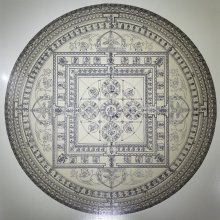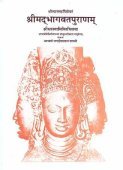Takshaka, Takṣaka: 34 definitions
Introduction:
Takshaka means something in Buddhism, Pali, Hinduism, Sanskrit, Marathi, Hindi. If you want to know the exact meaning, history, etymology or English translation of this term then check out the descriptions on this page. Add your comment or reference to a book if you want to contribute to this summary article.
The Sanskrit term Takṣaka can be transliterated into English as Taksaka or Takshaka, using the IAST transliteration scheme (?).
Alternative spellings of this word include Takshak.
Images (photo gallery)
In Hinduism
Purana and Itihasa (epic history)
Source: Wisdom Library: Bhagavata PuranaTakṣaka (तक्षक):—Son of Prasenajit (son of Viśvabāhu). He had a son named Bṛhadbala. (see Bhāgavata Purāṇa 9.12.8)
Source: Google Books: Cultural History from the Vāyu PurānaTakṣaka (तक्षक):—One of the Nāgas that dwell on the Niṣadha mountain, according to the Vāyu-purāṇa.
Source: archive.org: Puranic Encyclopedia1) Takṣaka (तक्षक).—A fierce serpent. Genealogy and birth. Descending in order from Viṣṇu—Brahmā—Marīci—Kaśyapa—Takṣaka. (See full article at Story of Takṣaka from the Puranic encyclopaedia by Vettam Mani)
2) Takṣaka (तक्षक).—The elder of the two sons of Lakṣmaṇa of his wife Ūrmilā. The other was Chatraketu. Following the instructions of Śrī Rāma, Lakṣmaṇa went to the east sea coast, defeated the forest tribe there. He then constructed a city there named Agati and made Takṣaka the king there. He then went to the west sea-coast and destroying the barbarous tribe there constructed a city there called Candramatī and made Chatraketu (? candraketu) the king. (Uttara Rāmāyaṇa).
Source: archive.org: Shiva Purana - English TranslationTakṣaka (तक्षक) refers to the son of Kadru and is a venomous serpent chief, according to the Śivapurāṇa 2.4.6 (“The miraculous feat of Kārttikeya”).—Accordingly, as a Brahmin named Nārada said to Kumāra (Kārttikeya): “[...] Please hear my submission through your ears. Please instil into the heart of everyone the feelings of devotion to you. If you are the protector with efficient honour what harm can an opponent do even if he be strong and efficient and protected on either side? What harm can even Takṣaka or even a carnivorous animal do unto him. [...]”.
Source: Cologne Digital Sanskrit Dictionaries: The Purana Index1a) Takṣaka (तक्षक).—A serpent chief; (nāga) of Sutalam and of the Krodhavaśa group.1 Caused the death of Parīkṣit in consequence of the curse of the Brahmaṇa's son. Parīkṣit was informed beforehand by Śuka and was not afraid.2 Met the sage Kaśyapa on his way to Parīkṣit's place.3 When Janamejaya began his sarpa satra (yāga), Takṣaka sought shelter of Indra, and this resulted in Indra's fall;4 served as calf for Nāgas to derive poison from the earth.5 The Nāga presiding over the month of Śukra;6 on the neck of Śiva; an ear ornament of Śiva.7 Shaken by Hiraṇyakaśipu;8 lived in the Niṣadha hill;9 sent along with others to fight Prahlāda;10 a Kādraveya;11 in the sun's chariot in the month of Suci.12
- 1) Bhāgavata-purāṇa V. 24. 29; Brahmāṇḍa-purāṇa II. 17. 34; 20. 24; III. 7. 32; Matsya-purāṇa 6. 39; 8. 7. Vāyu-purāṇa 39. 54; 50. 23; 54. 91; 69. 69.
- 2) Bhāgavata-purāṇa I. 12. 27; 18. 2 and 37; 19. 4; IX. 22. 36; XII. 5. 10; 6. 5.
- 3) Ib. XII. 6. 11-12.
- 4) Ib. XII. 6. 16-23.
- 5) Ib. IV. 18. 22; Brahmāṇḍa-purāṇa III. 8. 13; IV. 20. 53; 33. 36; 36. 212; Matsya-purāṇa 10. 19.
- 6) Bhāgavata-purāṇa XII. 11. 35.
- 7) Brahmāṇḍa-purāṇa II. 25. 88; Matsya-purāṇa 154. 444.
- 8) Matsya-purāṇa 163. 56: 114. 83; 126. 7; 133. 33.
- 9) Vāyu-purāṇa 46. 34; 52. 6.
- 10) Viṣṇu-purāṇa I. 17. 38.
- 11) Ib. I. 21. 21.
- 12) Ib. II. 10. 7.
1b) The son of Prasenajit and father of Bṛhadbala.*
- * Bhāgavata-purāṇa IX. 12. 8.
1c) The father of Jvalanā (s.v.).*
- * Matsya-purāṇa 49. 6; Vāyu-purāṇa 99. 128.
Takṣaka (तक्षक) is a name mentioned in the Mahābhārata (cf. I.31.5, I.35, I.37.13, I.41, I.41, I.52.7, I.57, I.59.40, I.65, I.90.23) and represents one of the many proper names used for people and places. Note: The Mahābhārata (mentioning Takṣaka) is a Sanskrit epic poem consisting of 100,000 ślokas (metrical verses) and is over 2000 years old.
Source: Shodhganga: Kasyapa Samhita—Text on Visha Chikitsa (itihasa)Takṣaka is the name of a Serpent (sarpa) mentioned in the thirty-fifth chapter (verses 4-17) of the Ādiparva of the Mahābhārata.—Accordingly, Sauti, on being implored by Śaunaka to name all the serpents in the course of the sarpa-sattra, tells him that it is humanly impossible to give a complete list because of their sheer multiplicity; but would name the prominent ones in accordance with their significance [e.g., Takṣaka].

The Purana (पुराण, purāṇas) refers to Sanskrit literature preserving ancient India’s vast cultural history, including historical legends, religious ceremonies, various arts and sciences. The eighteen mahapuranas total over 400,000 shlokas (metrical couplets) and date to at least several centuries BCE.
Vastushastra (architecture)
Source: Wisdom Library: Vāstu-śāstraTakṣaka (तक्षक):—One of the four types of Śilpin (“the architectural student”), according to the Śilparatna, which was written by Śrī Kumāra. The Śilparatna is a classical Hindu literary work on arts and crafts (this tradition is also known as śilpa-śāstra). The Śilpin learns his profession first from his teacher (guru), but later from various specialists.
Source: McGill: The architectural theory of the MānasāraTakṣaka (तक्षक).— Finally, the takṣaka, “carpenter”, also is stated to know the Veda, and be skilled in his craft of wood-joinery.
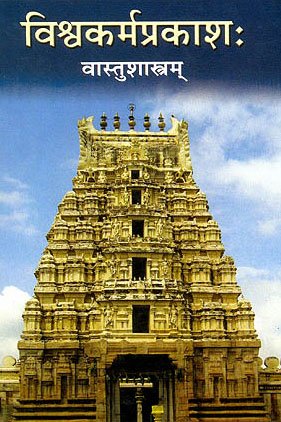
Vastushastra (वास्तुशास्त्र, vāstuśāstra) refers to the ancient Indian science (shastra) of architecture (vastu), dealing with topics such architecture, sculpture, town-building, fort building and various other constructions. Vastu also deals with the philosophy of the architectural relation with the cosmic universe.
Kavya (poetry)
Source: Wisdomlib Libary: KathāTakṣaka (तक्षक).—One of the eight kulas (‘families’) of nāgas mentioned by Soḍḍhala in his Udayasundarīkathā. Takṣaka, and other nāgas, reside in pātāla (the nether world) and can assume different forms at will. Their movement is unobstructed in the all the worlds and they appear beautiful, divine and strong.
The Udayasundarīkathā is a Sanskrit work in the campū style, narrating the story of the Nāga princess Udayasundarī and Malayavāhana, king of Pratiṣṭhāna. Soḍḍhala is a descendant of Kalāditya (Śilāditya’s brother) whom he praises as an incarnation of a gaṇa (an attendant of Śiva).

Kavya (काव्य, kavya) refers to Sanskrit poetry, a popular ancient Indian tradition of literature. There have been many Sanskrit poets over the ages, hailing from ancient India and beyond. This topic includes mahakavya, or ‘epic poetry’ and natya, or ‘dramatic poetry’.
Shaivism (Shaiva philosophy)
Source: Wisdom Library: ŚaivismTakṣaka (तक्षक) is the name of a nāga chief, presiding over Pātāla, according to the Parākhyatantra 5.44-45. Pātāla refers to one of the seven pātālas (‘subterranean paradise’). The word pātāla in this tantra refers to subterranean paradises for seekers of otherworldly pleasures and each the seven pātālas is occupied by a regent of the daityas, nāgas and rākṣasas.
The Parākhyatantra is an old Śaiva-siddhānta tantra dating from before the 10th century.
Source: Shodhganga: Temple management in the ĀgamasTakṣaka (तक्षक) refers to the “carpenter” dedicated to the Śiva temple.—There was also the Śilpi and Takṣaka, the sculptor and carpenter who was the critical resource for the actual construction of the temple. The artisan—be it architect, mason, sculptor, carpenter and so on—has an important role in the Āgama. The Āgama has specific and elaborate guidelines for the construction of every part of the temple, design, making of chariots, images, pedastals, halls, divine weapons and so on. The Āgama is as much a manual for construction and design as it is a manual of ritual. Therefore the artisan is present during the ritual till a specific stage from where the Ācārya takes over for the ritual installation. He is honoured just as the Ācārya, Mūrtipa, Daivajña etc. are honoured.

Shaiva (शैव, śaiva) or Shaivism (śaivism) represents a tradition of Hinduism worshiping Shiva as the supreme being. Closely related to Shaktism, Shaiva literature includes a range of scriptures, including Tantras, while the root of this tradition may be traced back to the ancient Vedas.
Ayurveda (science of life)
Source: Ancient Science of Life: Snake bite treatment in Prayoga samuccayamTakṣaka (तक्षक) refers to one of the eight primordial snakes, according to the 20th century Prayogasamuccaya (one of the most popular and widely practised book in toxicology in Malayalam).—The work classifies viṣa into two groups, viz. sthāvara and jaṅgama (animate and inanimate). This is followed by a brief description of the origin of snakes. A mythological story is narrated in this context. It is said that in the beginning, there were only 8 snakes, Ananta, Gulika, Vāsuki, Śaṅkhapālaka, Takṣaka, Mahāpadma, Padma and Karkoṭaka and that all other snakes originated from these.

Āyurveda (आयुर्वेद, ayurveda) is a branch of Indian science dealing with medicine, herbalism, taxology, anatomy, surgery, alchemy and related topics. Traditional practice of Āyurveda in ancient India dates back to at least the first millenium BC. Literature is commonly written in Sanskrit using various poetic metres.
Vaishnavism (Vaishava dharma)
Source: Pure Bhakti: Brhad BhagavatamrtamTakṣaka (तक्षक) refers to:—The name of the snakebird who, impelled by the curse of the brāhmaṇa, bit Mahārāja Parīkṣit. (cf. Glossary page from Śrī Bṛhad-bhāgavatāmṛta).
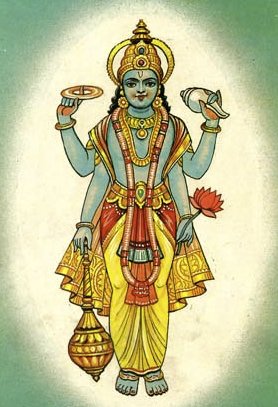
Vaishnava (वैष्णव, vaiṣṇava) or vaishnavism (vaiṣṇavism) represents a tradition of Hinduism worshipping Vishnu as the supreme Lord. Similar to the Shaktism and Shaivism traditions, Vaishnavism also developed as an individual movement, famous for its exposition of the dashavatara (‘ten avatars of Vishnu’).
Pancaratra (worship of Nārāyaṇa)
Source: Shodhganga: Kasyapa Samhita—Text on Visha Chikitsa (p)Takṣaka (तक्षक) refers to one of the eight Divine Serpents visualized as the decorations (nāgābharaṇa) of Garuḍa, according to the second chapter of the Kāśyapa Saṃhitā: an ancient Sanskrit text from the Pāñcarātra tradition dealing with both Tantra and Viṣacikitsā (Toxicology).—Accordingly, text text dictates that a Garuḍa-upāsaka, the aspirant, must meditate on Garuḍa of the following form—[...] He shines with his head adorned with a crown, bedecked with jewels, handsome in every limb, with tawny eyes and tremendous speed, shining like gold, long-armed, broad-shouldered and adorned with the eight divine serpents or Nāgas [e.g., Takṣaka form his girdle]. Takṣaka form his girdle.
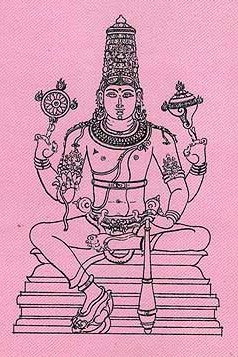
Pancaratra (पाञ्चरात्र, pāñcarātra) represents a tradition of Hinduism where Narayana is revered and worshipped. Closeley related to Vaishnavism, the Pancaratra literature includes various Agamas and tantras incorporating many Vaishnava philosophies.
General definition (in Hinduism)
Source: Apam Napat: Indian MythologyAccording to the Mahabharata, Takshaka is the king of serpents. Other accounts give the name of this being as Vasuki, but these two serpents are believed to be different snakes.
In Buddhism
Tibetan Buddhism (Vajrayana or tantric Buddhism)
Source: Wisdom Library: Tibetan BuddhismTakṣaka (तक्षक) is the name of a Nāga mentioned as attending the teachings in the 6th century Mañjuśrīmūlakalpa: one of the largest Kriyā Tantras devoted to Mañjuśrī (the Bodhisattva of wisdom) representing an encyclopedia of knowledge primarily concerned with ritualistic elements in Buddhism. The teachings in this text originate from Mañjuśrī and were taught to and by Buddha Śākyamuni in the presence of a large audience (including Takṣaka).
Source: Google Books: VajrayoginiTakṣaka (तक्षक).—Serpent deity (nāga) of the northern cremation ground.—The Śmaśānavidhi 7 states that Takṣaka is red and has a svastika on his hood, making the añjali with bowed head.
Source: Wisdomlib Libary: VajrayoginiTakṣaka (तक्षक) is the name of a serpent (nāga) associated with Gahvara: the northern cremation ground (śmaśāna) according to the Vajravārāhī-sādhana by Umāpatideva as found in te 12th century Guhyasamayasādhanamālā. As a part of this sādhana, the practicioner is to visualize a suitable dwelling place for the goddess inside the circle of protection which takes the form of eight cremation grounds.
These nāga-kings (e.g., Takṣaka) are variously known as nāgarāja, nāgeśa, nāgendra and bhujageśa and are depicted as wearing white ornaments according to Lūyīpāda’s Śmaśānavidhi. They have human tosos above their coiled snaketails and raised hoods above their heads. They each have their own color assigned and they bear a mark upon their raised hoods. They all make obeisance to the dikpati (protector) who is before them and are seated beneath the tree (vṛkṣa).
Source: academia.edu: The Structure and Meanings of the Heruka MaṇḍalaTakṣaka (तक्षक) refers to one of the eight serpent king (nāgendra) of the Guṇacakra, according to the 10th century Ḍākārṇava chapter 15. Accordingly, the guṇacakra refers to one of the four divisions of the sahaja-puṭa (‘innate layer’), situated within the padma (lotus) in the middle of the Herukamaṇḍala. Takṣaka is associated with the charnel grounds (śmaśāna) named Gahvara; with the tree (vṛkṣa) named Aśvattha; with the direction-guardians (dikpāla) named Kubera and with the cloud king (meghendra) named Ghūrṇita.

Tibetan Buddhism includes schools such as Nyingma, Kadampa, Kagyu and Gelug. Their primary canon of literature is divided in two broad categories: The Kangyur, which consists of Buddha’s words, and the Tengyur, which includes commentaries from various sources. Esotericism and tantra techniques (vajrayāna) are collected indepently.
Mahayana (major branch of Buddhism)
Source: archive.org: Bulletin of the French School of the Far East (volume 5)Takṣaka (तक्षक) is the name of a Nāgarāja appointed as one of the Divine protector deities of Vārāṇasī (Benares), according to chapter 17 of the Candragarbha: the 55th section of the Mahāsaṃnipāta-sūtra, a large compilation of Sūtras (texts) in Mahāyāna Buddhism partly available in Sanskrit, Tibetan and Chinese.—In the Candragarbhasūtra, the Bhagavat invites all classes of Gods and Deities to protect the Law [dharma?] and the faithful in their respective kingdoms of Jambudvīpa [e.g., the Nāgarāja Takṣaka in Vārāṇasī], resembling the time of the past Buddhas.

Mahayana (महायान, mahāyāna) is a major branch of Buddhism focusing on the path of a Bodhisattva (spiritual aspirants/ enlightened beings). Extant literature is vast and primarely composed in the Sanskrit language. There are many sūtras of which some of the earliest are the various Prajñāpāramitā sūtras.
Languages of India and abroad
Marathi-English dictionary
Source: DDSA: The Molesworth Marathi and English Dictionarytakṣaka (तक्षक).—m (S) The name of one of the principal nāga or serpents of pātāla. 2 fig. Applied to a malicious, vindictive, vengeful person. 3 A carpenter.
Source: DDSA: The Aryabhusan school dictionary, Marathi-Englishtakṣaka (तक्षक).—m The name of one of the princi- pal nāga of pātāla. Fig. A vengeful per- son. A carpenter.
Marathi is an Indo-European language having over 70 million native speakers people in (predominantly) Maharashtra India. Marathi, like many other Indo-Aryan languages, evolved from early forms of Prakrit, which itself is a subset of Sanskrit, one of the most ancient languages of the world.
Sanskrit dictionary
Source: DDSA: The practical Sanskrit-English dictionaryTakṣaka (तक्षक).—[takṣ ṇvul]
1) A carpenter, wood-cutter (whether by caste or profession).
2) The chief actor in the prelude of a drama (i. e. the sūtradhāra).
3) Name of the architect of the gods.
4) Name of one of the principal Nāgas or serpents of the Pātāla, son of Kaśyapa and Kadru (saved at the intercession of the sage Āstika from being burnt down in the serpent-sacrifice performed by king Janamejaya, in which many others of his race were burnt down to ashes).
Derivable forms: takṣakaḥ (तक्षकः).
Source: Cologne Digital Sanskrit Dictionaries: Shabda-Sagara Sanskrit-English DictionaryTakṣaka (तक्षक).—m.
(-kaḥ) 1. A carpenter. 2. The Sutradhara, the manager and chief actor in the prelude of a drama. 3. One of the principal Nagas or serpents of Patala. 4. The divine artist, Viswakarma. 5. The name of a tree. E. takṣ to chip, to peel or plane, &c. affix ṇvul.
Source: Cologne Digital Sanskrit Dictionaries: Benfey Sanskrit-English DictionaryTakṣaka (तक्षक).—[takṣ + aka] m. A cutter, a wood-cutter, [Rāmāyaṇa] 2, 80, 2.
Source: Cologne Digital Sanskrit Dictionaries: Cappeller Sanskrit-English DictionaryTakṣaka (तक्षक).—[masculine] cutter, carpenter; as pr. [neuter] = [preceding]
Source: Cologne Digital Sanskrit Dictionaries: Aufrecht Catalogus CatalogorumTakṣaka (तक्षक) as mentioned in Aufrecht’s Catalogus Catalogorum:—poet. [Subhāshitāvali by Vallabhadeva]
Source: Cologne Digital Sanskrit Dictionaries: Monier-Williams Sanskrit-English Dictionary1) Takṣaka (तक्षक):—[from takṣ] m. ([Pāṇini 8-2, 29; Kāśikā-vṛtti]) ‘a cutter’ See kāṣṭha-, vṛkṣa-
2) [v.s. ...] a carpenter, [cf. Lexicographers, esp. such as amarasiṃha, halāyudha, hemacandra, etc.]
3) [v.s. ...] Viśvakarman, [cf. Lexicographers, esp. such as amarasiṃha, halāyudha, hemacandra, etc.]
4) [v.s. ...] the Sūtra-dhāra or speaker in the prelude of a drama, [cf. Lexicographers, esp. such as amarasiṃha, halāyudha, hemacandra, etc. [Scholiast or Commentator]]
5) [v.s. ...] Name of a tree, [cf. Lexicographers, esp. such as amarasiṃha, halāyudha, hemacandra, etc.]
6) [v.s. ...] of a Nāga prince (cf. kṣa), [Atharva-veda viii, 10, 29; Tāṇḍya-brāhmaṇa xxv, 15; Śāṅkhāyana-gṛhya-sūtra iv, 18, 1; Kauśika-sūtra; Mahābhārata] etc.
7) [v.s. ...] of a son of Prasena-jit, [Bhāgavata-purāṇa ix, 12, 8]
8) [v.s. ...] See also kṣa.
9) Tākṣaka (ताक्षक):—mfn. relating or belonging to Takṣakīyā [gana] bilvakādi.
Source: Cologne Digital Sanskrit Dictionaries: Yates Sanskrit-English DictionaryTakṣaka (तक्षक):—(kaḥ) 1. m. A principal serpent of pātāla; a carpenter; a chief actor in the prelude of a drama; a tree; Vishwakarma.
[Sanskrit to German]
Sanskrit, also spelled संस्कृतम् (saṃskṛtam), is an ancient language of India commonly seen as the grandmother of the Indo-European language family (even English!). Closely allied with Prakrit and Pali, Sanskrit is more exhaustive in both grammar and terms and has the most extensive collection of literature in the world, greatly surpassing its sister-languages Greek and Latin.
Hindi dictionary
Source: DDSA: A practical Hindi-English dictionaryTakṣaka (तक्षक) [Also spelled takshak]:—(nm) a kind of deadly serpent.
...
Kannada-English dictionary
Source: Alar: Kannada-English corpusTakṣaka (ತಕ್ಷಕ):—[noun] = ತಕ್ಷ - [taksha -]1.
Kannada is a Dravidian language (as opposed to the Indo-European language family) mainly spoken in the southwestern region of India.
See also (Relevant definitions)
Starts with: Takshakahridaya, Takshakahridayamantra, Takshakakarmapaddhatitika, Takshakanaga, Takshakarman.
Ends with: Kashthatakshaka, Lohitakshaka, Upatakshaka, Vrikshatakshaka.
Full-text (+136): Kashthatakshaka, Pucchandaka, Navanaga, Vrikshatakshaka, Vaishaleya, Vitastakhya, Jvalana, Astikarthada, Aswasena, Takshanya, Takshakakarmapaddhatitika, Astika, Prasenajit, Avanaha, Kadruputra, Agati, Janamejaya, Takshna, Gahvara, Upatakshaka.
Relevant text
Search found 50 books and stories containing Takshaka, Takṣaka, Taksaka, Tākṣaka; (plurals include: Takshakas, Takṣakas, Taksakas, Tākṣakas). You can also click to the full overview containing English textual excerpts. Below are direct links for the most relevant articles:
List of Mahabharata people and places (by Laxman Burdak)
Mahabharata (English) (by Kisari Mohan Ganguli)
Brihad Bhagavatamrita (commentary) (by Śrī Śrīmad Bhaktivedānta Nārāyana Gosvāmī Mahārāja)
Verse 2.1.29 < [Chapter 1 - Vairāgya (renunciation)]
Verse 2.1.31 < [Chapter 1 - Vairāgya (renunciation)]
Verse 1.1.15-17 < [Chapter 1 - Bhauma (the earthly plane)]
The Matsya Purana (critical study) (by Kushal Kalita)
Part 1c - Architecture (vāstu) in the Matsyapurāṇa < [Chapter 7 - Art and Architecture in the Matsyapurāṇa]
Animal Kingdom (Tiryak) in Epics (by Saranya P.S)
Chapter 6.14 - Shakuntala-upakhyana
Chapter 5.2 - Ashtanaga—Eight important Nagas
Puranic encyclopaedia (by Vettam Mani)
Related products
